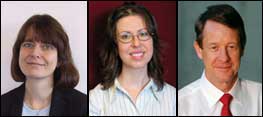Digital technology allows for advanced signal processing that is not possible with analog instruments. While many studies have investigated the benefits of advanced signal processing in adults, the number of studies examining digital amplification in children is relatively limited.
Children with hearing impairments have greater difficulty understanding speech in background noise than do adults and children with normal hearing. In pediatric hearing aid fittings, advanced digital signal processing—including adaptive directivity and noise suppression—could provide significant advantages.1,2 However, it is important that dual-microphone technology be an option in multi-program instruments to avoid reducing language inputs from behind.1
It is generally recognized that the use of a well-established prescriptive fitting procedures, such as DSL [i/o]3 or NAL-NL1,4 is an essential step in fitting hearing aids to children.5 The use of a systematic procedure for selection and fitting of the electroacoustic parameters of the hearing aid is meant to ensure consistently appropriate initial fittings across children.
This article examines children’s performance with their personal analog hearing aids compared to digital, dual-microphone hearing aids set to Desired Sensation Level (DSL) targets. The goal was to determine whether an advanced digital instrument can successfully be fit to children, and to what extent they benefit from the new instruments compared to their own analog hearing aids.
Method and Design
Ten children, ages 5 to 14 years (mean age: 10 years), participated in the study. All subjects were previously diagnosed with bilateral sensorineural hearing loss, ranging from mild to severe (45-85 dB PTA in the better ear). Prior to this study, all wore binaural, analog, single-channel BTE hearing instruments. They were recruited from various public schools in Utah, with their personal linear analog hearing aids fitted to various prescriptive targets by various audiologists.
The experimental hearing aids were Phonak Claro 211 and 311 dAZ BTE models used with the subjects’ personal earmolds. These devices are fully digital, multi-program aids with 20 bands. In noisy situations, an adaptive dual-microphone system adjusts the directivity pattern according to the direction of the noise source. Depending on the acoustic environment, the appropriate program can be automatically selected by the instrument with the Autoselect feature. For the purposes of this study, this feature was deactivated and program switching was accomplished via a manual tactronic switch.
The digital hearing aids were programmed with Program 1 (P1) being set in the omnidirectional microphone mode, and Program 2 (P2) set in the dual-microphone mode. They were set as closely as possible to each subject’s DSL targets for gain and MPO. Real ear to coupler differences (RECDs) were included in the pre calculation. RECDs were measured with all subjects’ personal earmolds in both ears with an Audioscan RM500.
Objective and subjective tests were conducted with both the analog and digital instruments (after a 1-month period of acclimatization wearing the digital aids full time). Speech intelligibility in quiet was determined using the PBK 50 (list A) at 50 dB HL at 0 degrees azimuth, yielding a percent correct score. To test speech understanding in noise, pediatric speech intelligibility (PSI) recorded sentence materials were used in Format I.6 Sentences were presented at 0° azimuth at a constant level of 60 dB HL, while recorded multi-talker babble was presented at 180° azimuth. The babble was presented at varying presentation levels to adaptively determine the sentence speech reception threshold (sSRT), which indicates the signal-to-noise ratio (SNR) at which 50% of sentences could be correctly repeated.7
To assess subjective differences, the Children’s Home Inventory for Listening Difficulties (CHILD) questionnaire8 was used to measure real-world listening performance with the subjects’ analog hearing aids and with the experimental digital aids. Fifteen questions were scored from 0 to 8 points, with more points indicating more successful listening.
Results
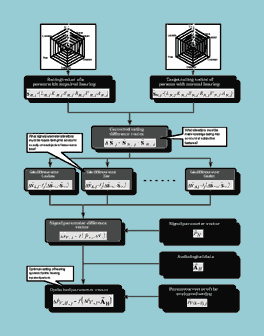
Electroacoustic measures. The average electroacoustic performance of the analog and digital devices is shown, with DSL targets, in Figure 1 (page 40). In general, the analog devices tended to provide less output for speech signals than recommended by the DSL[i/o] algorithm, and a closer match to targets was achieved with the digital devices. On average, the digital instruments had 5.7 dB higher output for speech-level inputs. However, this difference was primarily noticeable at the extreme frequencies, where the average difference was 12.4 dB and 9.1 dB at 250 Hz and 4000 Hz, respectively. The maximum output responses of the analog and digital instruments were similar and, on average, did not exceed DSL targets.
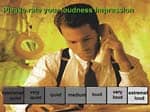
Speech in quiet. The average speech perception scores in quiet are shown in Figure 2 (page 40). The results indicated a significant increase in the average speech perception scores11 with the digital instruments, compared to the analog aids (t[9]=-2.45, p<.05). Scores were higher on average with the digital devices by 13%, compared with the personal analog hearing aids (range: -2% to 45% benefit).
Also evaluated was whether each child’s PBK score with the digital aid in program 1 (digital/P1) fell outside of a 95% confidence interval around his/her score with the analog device.9 No child performed more poorly with the digital/P1 than with the analog devices. Two children who had among the lowest scores initially, and who received relatively large changes in frequency response, subsequently experienced significant improvements in speech perception. It appears that the use of a systematic procedure to select and verify the frequency response produced better results than had been previously obtained with this sample of children. It is not possible to predict whether these differences would have been measured if an attempt had been made to refit the children’s own analog aids using the same systematic procedure.
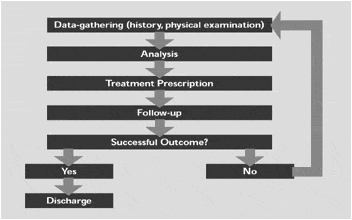
Speech in noise. The results for speech perception in noise are shown in Figure 3. On average, children had sSRTs at a 7.4 dB lower (ie, better) SNR score when the P2/directional setting of the digital instruments was used rather than their own analog hearing aids. Similarly, the sSRT with the P2/directional setting was 7.7 dB better than with the P1/omnidirectional setting. A repeated measures analysis of variance indicated that test conditions had a significant effect on the measured sSRT (F[1.5,12.2]=19.89, p<.001). Two-tailed post-hoc analyses were conducted for each test condition compared to every other test condition. Results indicated that the digital/P2/directional test condition provided significantly better sSRTs than either the children’s own aids (t[8]=4.45, p<.05), or the digital/P1/omni condition (t[8]=8.01, p<.05). No significant differences were found for speech-in-noise performance between the children’s own aids and the digital/P1/omni test condition.
Examination of the individual scores was also completed. The confidence interval for a significant change was conservatively defined as a 4 dB improvement or decrement in sSRT. With the digital/P2 program, 80% of the children in this sample received significant improvement in sSRT over either their own aids or the digital/P1 program. No children experienced significant decrements with the digital/P2 program.
These results indicate that, in omnidirectional mode, the digital devices process speech in noise with SNRs that are equivalent to those of conventional devices. However, when used in directional mode, a significant improvement in SNR occurs, which is sufficient to improve the perception of speech in noise by children with hearing loss. These findings are consistent with those of previous studies of this technology in children and adults.1,10
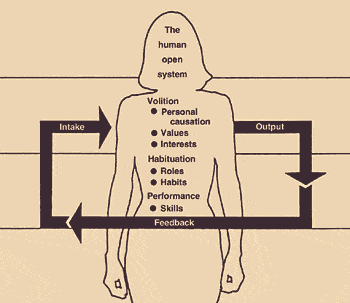

Figure 4. Individual and mean scores on the subjective assessment of real-world listening performance (CHILD). Individual confidence intervals for significant change are shown by the T bars plotted on the analog scores. |
Subjective rating. Individual results for the parents’ and children’s subjective rating of aided performance in daily listening are shown in Figure 4. Subjects #8 and #10, ages 5 and 7, had difficulty completing the questionnaire, and therefore have no scores shown. This is consistent with the documentation provided with the CHILD inventory, which indicates that age 7 or 8 is the minimum age to complete the inventory.8
Average scores for the CHILD inventory improved from a rating of 4.8 to 6.5 for the children, and from 4.5 to 5.9 for their parents, following the 1 month trial period with the digital devices. These changes correspond to ratings of just below “OK but not easy” for listening with the analog aids, and between “pretty good” and “good” for listening with the Claro aids. This change was statistically significant (F[1,7]=10.8, p<.05), for both the parents’ scores (t[9]=-3.56, p<.05) and the children’s scores (t[7]=3.78, p<.05).
Confidence intervals for significant changes in individual children’s scores for the CHILD inventory were calculated using the test-retest reliability coefficient from the manual.8 These are shown in Figure 4 (page 42) as vertical error bars plotted on the analog scores. If the individual score for the digital fitting is higher than the error bar, significant improvement was shown on the CHILD inventory. Results indicated that 50% of the children and 80% of parents reported significantly better real-world listening performance with the digital device. None reported significantly poorer real-world performance.
These results suggest that listening performance in real environments was improved with the new fittings. Anecdotally, all children except the two youngest subjects (#8 and #10) reported using the omni-/directional/telephone memories of the devices.
Discussion
This study compared objective and subjective performance with two hearing aid fittings in children ages 5-14 who had mild to severe sensorineural hearing losses. Objective measures revealed a significant improvement in childrens’ speech perception in quiet and in noise when a digital, dual-microphone hearing aid fitted to DSL targets was compared to analog hearing aids fitted to various targets. Subjectively, the digital instruments were clearly preferred by both the children and their parents.
The performance improvement may be attributable to some combination of WDRC, changes in frequency response, multiple channels of compression, multiple memory options, directional microphone capabilities, and other factors. It is not possible to assess the individual contributions of each of these aspects. The results indicate, however, that the use of a systematic procedure to select and verify the frequency response might contribute to improved results for speech intelligibility in quiet. In noise, there is little doubt that the adaptive dual-microphone is the major contributing factor for improvements in speech intelligibility.
In real-life use, most of children reported using the directional microphone and telephone programs on the new aids via a switch on each BTE instrument. The children not making use of multiple memories were among the youngest in the study, and also were not able to report their opinions of real-world listening performance for either their previous aids or the new fittings.
| This article was submitted to HR by Ronda K. Condie, MS, an audiologist at Hearing Aid for Kids, Sandy, Utah; Susan D. Scollie, MClSc, of the Child Amplification Laboratory at the National Center for Audiology, London, Ontario; and Paul C. Checkley, MSc, at the Audiology and Education Department. of Phonak AG, Staefa, Switzerland. Correspondence can be addressed to Ronda K. Condie, MS, Hearing Aid for Kids, 10720 Dimple Dell Dr., Sandy, UT 84092; email: [email protected]. |
References
1. Gravel J, Fausel N, Liskow C, Chobot J. Children’s speech recognition in noise using omni-directional and dual-microphone hearing aid technology. Ear and Hear. 1999;20:1-11.
2. Nozza R, Rossman R, Bond L, Miller S. Infant speech sound discrimination in noise. J Acoust Soc Amer. 1990;87:338-350.
3. Cornelisse LE, Seewald RC, Jamieson DG. The input/output (i/o) formulae: a theoretical approach to the fitting of personal amplification devices. J Acoust Soc Amer. 1995;97(3):1854-64.
4. Byrne D, Dillon H, Ching T, Katsch R, Keidser G. NAL-NL1 procedure for fitting nonlinear hearing aids: characteristics and comparisons with other procedures. J Amer Acad Audiol. 2001;12 (1):37-51.
5. Pediatric Working Group. Amplification for infants and children with hearing loss. Amer Jour Audiol. 1996;5(1):53-68.
6. Jerger S, Jerger J, Abrams S. Speech audiometry in the young child. Ear and Hear. 1983;4(1):56-66.
7. Nilsson M, Soli SD, Sullivan JA. Development of the hearing in noise test for the measurement of speech reception thresholds in quiet and in noise. J Acoust Soc Amer. 1994;95(2):1085-1099.
8. Anderson KL, Smaldino JJ. The children’s home inventory of listening difficulties. Available at www.edaud.org. Accessed May 2000.
9. Thornton AR, Raffin MJM. Speech-discrimination scores modeled as a binomial variable. J Speech Hear Res. 1978;21:507-518.
10. Valente M, Fabry DA, Potts LG. Recognition of speech in noise with hearing aids using dual microphones. J Amer Acad Aud. 1995;6(6):440-449.
11. Studebaker GA. A “rationalized” arcsine transform. J Speech Hear Res. 1985;28(3):455-62.



